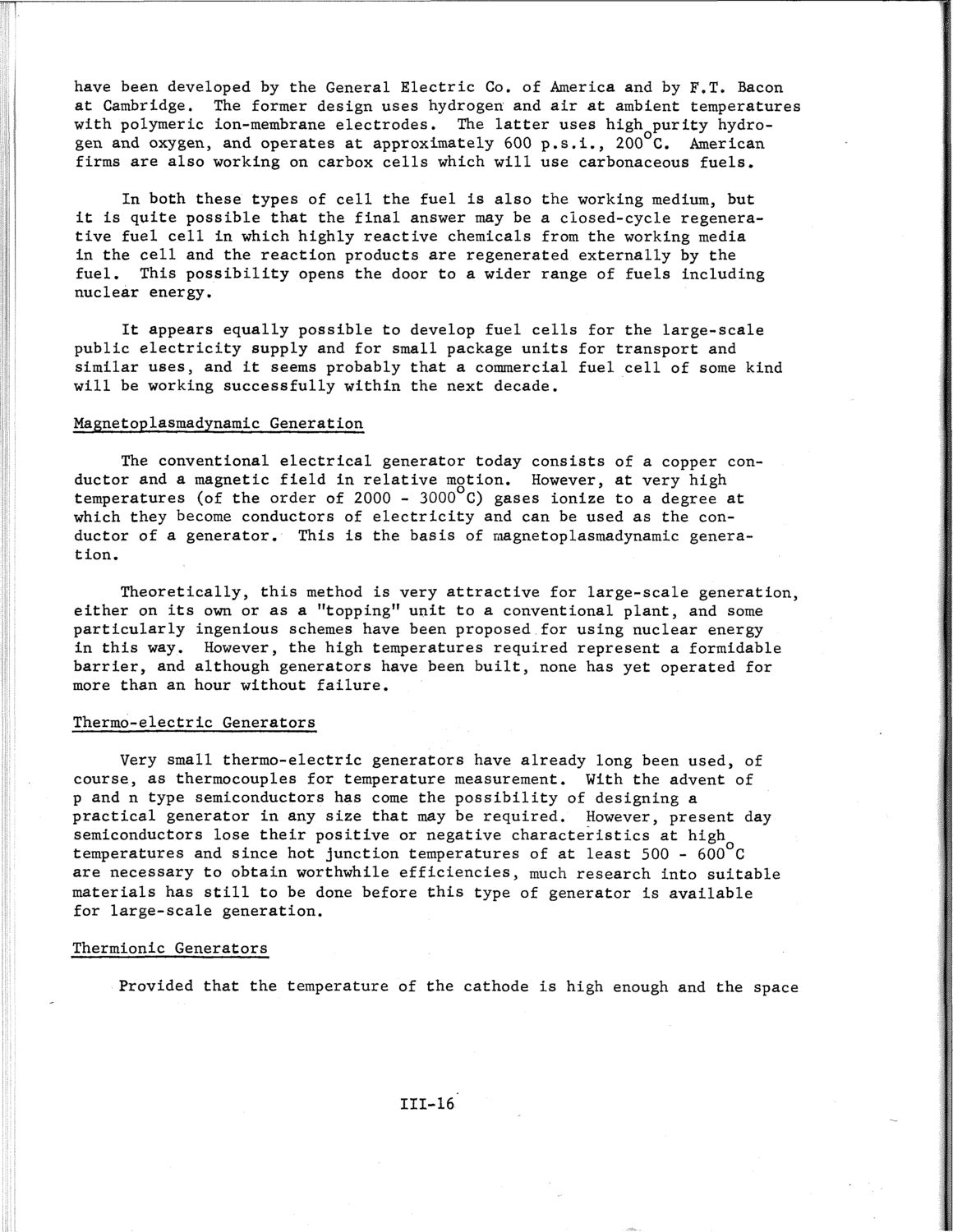| |
| |
Caption: SWE - Proceedings of the First International Conference of Women Engineers and Scientists
This is a reduced-resolution page image for fast online browsing.

EXTRACTED TEXT FROM PAGE:
have been developed by the General Electric Co. of America and by F.T. Bacon at Cambridge. The former design uses hydrogen and air at ambient temperatures with polymeric ion-membrane electrodes. The latter uses high purity hydrogen and oxygen, and operates at approximately 600 p.s.i., 200 C. American firms are also working on carbox cells which will use carbonaceous fuels. In both these types of cell the fuel is also the working medium, but it is quite possible that the final answer may be a closed-cycle regenerative fuel cell in which highly reactive chemicals from the working media in the cell and the reaction products are regenerated externally by the fuel. This possibility opens the door to a wider range of fuels including nuclear energy. It appears equally possible to develop fuel cells for the large-scale public electricity supply and for small package units for transport and similar uses, and it seems probably that a commercial fuel cell of some kind will be working successfully within the next decade. Magnetoplasmadynamic Generation The conventional electrical generator today consists of a copper conductor and a magnetic field in relative motion. However, at very high temperatures (of the order of 2000 - 3000 C) gases ionize to a degree at which they become conductors of electricity and can be used as the conductor of a generator. This is the basis of magnetoplasmadynamic generation. Theoretically, this method is very attractive for large-scale generation, either on its own or as a "topping" unit to a conventional plant, and some particularly ingenious schemes have been proposed for using nuclear energy in this way. However, the high temperatures required represent a formidable barrier, and although generators have been built, none has yet operated for more than an hour without failure. Thermo-electric Generators Very small thermo-electric generators have already long been used, of course, as thermocouples for temperature measurement. With the advent of p and n type semiconductors has come the possibility of designing a practical generator in any size that may be required. However, present day semiconductors lose their positive or negative characteristics at high temperatures and since hot junction temperatures of at least 500 - 600 C are necessary to obtain worthwhile efficiencies, much research into suitable materials has still to be done before this type of generator Is available for large-scale generation. Thermionic Generators Provided that the temperature of the cathode is high enough and the space 111-16
| |